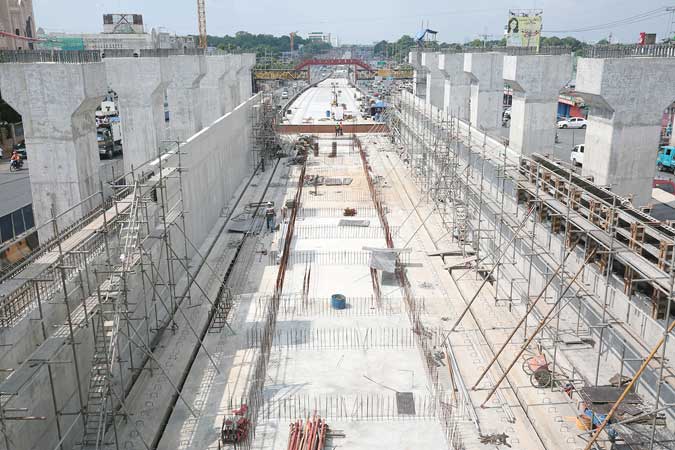THE Organisation for Economic Co-operation and Development (OECD) expects the Philippines to post only a “partial recovery” in 2021, with growth of 5.9%, citing still-weak consumption.
The OECD’s previous forecast for the year was 6.2%, issued in November.
The new forecast was made in its “Economic Outlook for Southeast Asia, China and India 2021: Reallocating Resources for Digitalisation” report released Thursday.
After a record contraction of 9.5% last year, the steepest decline in Southeast Asia, Philippine growth this year is expected to be carried by public investment, while reflecting year-on-year base effects, it said.
“Public investment and net exports are expected to support a partial economic recovery in 2021 (+5.9%), although rising debt costs, declining remittances and the capacity of the government to service debt remain major downside risks to the outlook,” it said.
The OECD said private consumption will continue to be weak this year, since the unemployment rate will likely remain high while remittances from overseas Filipino workers (OFWs), which fuel household spending, will remain subdued.
Private consumption was one of the main drags on the economy last year, with the indicator falling 8%. OFW remittances were down 0.8% at the end of November.
Compared to the other large regional economies, known collectively as the ASEAN-5, the Philippines’ projected growth this year is in the middle of the pack. The growth leaders are expected to be Vietnam and Malaysia, which are both projected to grow in the 7% range this year, while Thailand and Indonesia are at bottom with projected growth of 4% and 4.5%, respectively.
The OECD’s Philippine GDP (gross domestic product) estimate for 2021 is below the average of 7.4% for Emerging Asia but higher than the 5.1% projected for all 10 members of the Association of Southeast Asian Nations, known as the ASEAN 10.
“In many countries in Emerging Asia, an uncertain situation on the health front and limited policy space hinder recovery prospects for 2021,” the OECD said.
It said the Philippines’ second fiscal stimulus law worth P165.5 billion will help mitigate the economic impact of the pandemic for the short term.
However, possible delays in spending and program implementation pose downside risk, as seen in the slow distribution of cash handouts at the height of the lockdown in April.
“The ‘Build, Build, Build’ public and private infrastructure investment program is still perceived as the main driver of economic recovery,” the OECD said.
The government allocated P1.2 trillion for infrastructure programs in its P4.5-trillion budget this year to generate jobs and fast-track the completion of big-ticket projects before the administration ends its six-year term in mid-2022.
The OECD flagged the rising cost of debt and the government’s ability to handle maturing debt as a downside risk to its outlook.
However, it said sovereign risk has been mitigated because the debt portfolio is largely composed of domestic loans and the majority consists of long-term debt.
The National Government’s outstanding debt hit P9.8 trillion at the end of 2020, equivalent to 54.5% of GDP. The breakdown is 68% domestic and 32% foreign debt.
“The fiscal situation is likely to remain challenging in Emerging Asian countries. Concerns over the ability of governments to restore sustainable public finances over the medium to long term are likely to persist. Increasing debt-to-GDP ratios suggest that sufficiently large primary surpluses need to be created and then maintained by governments over an extended period to put the debt ratio on a decreasing track,” it said.
The OECD expects the Philippines’ general government fiscal deficit to ease to 7.8% of GDP this year from the estimated 8.2% ratio last year and 0.1% in 2019.
Meanwhile, the current account is expected to post a deficit equivalent to 1.2% of GDP this year, from the estimated 0.1% surplus in 2020. — Beatrice M. Laforga

